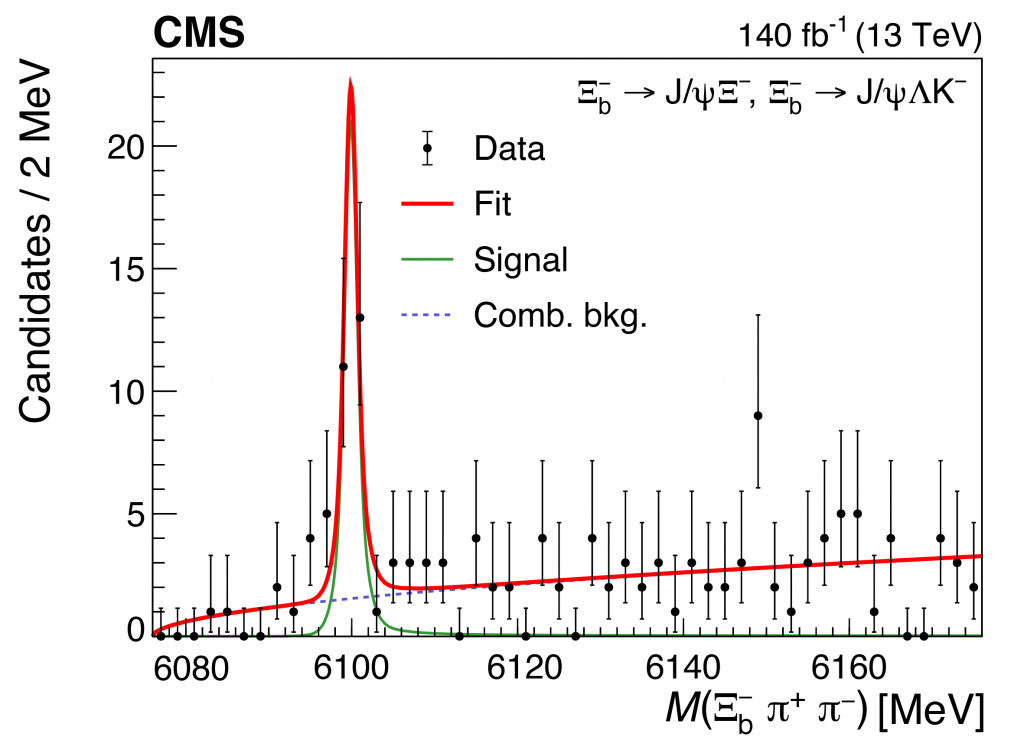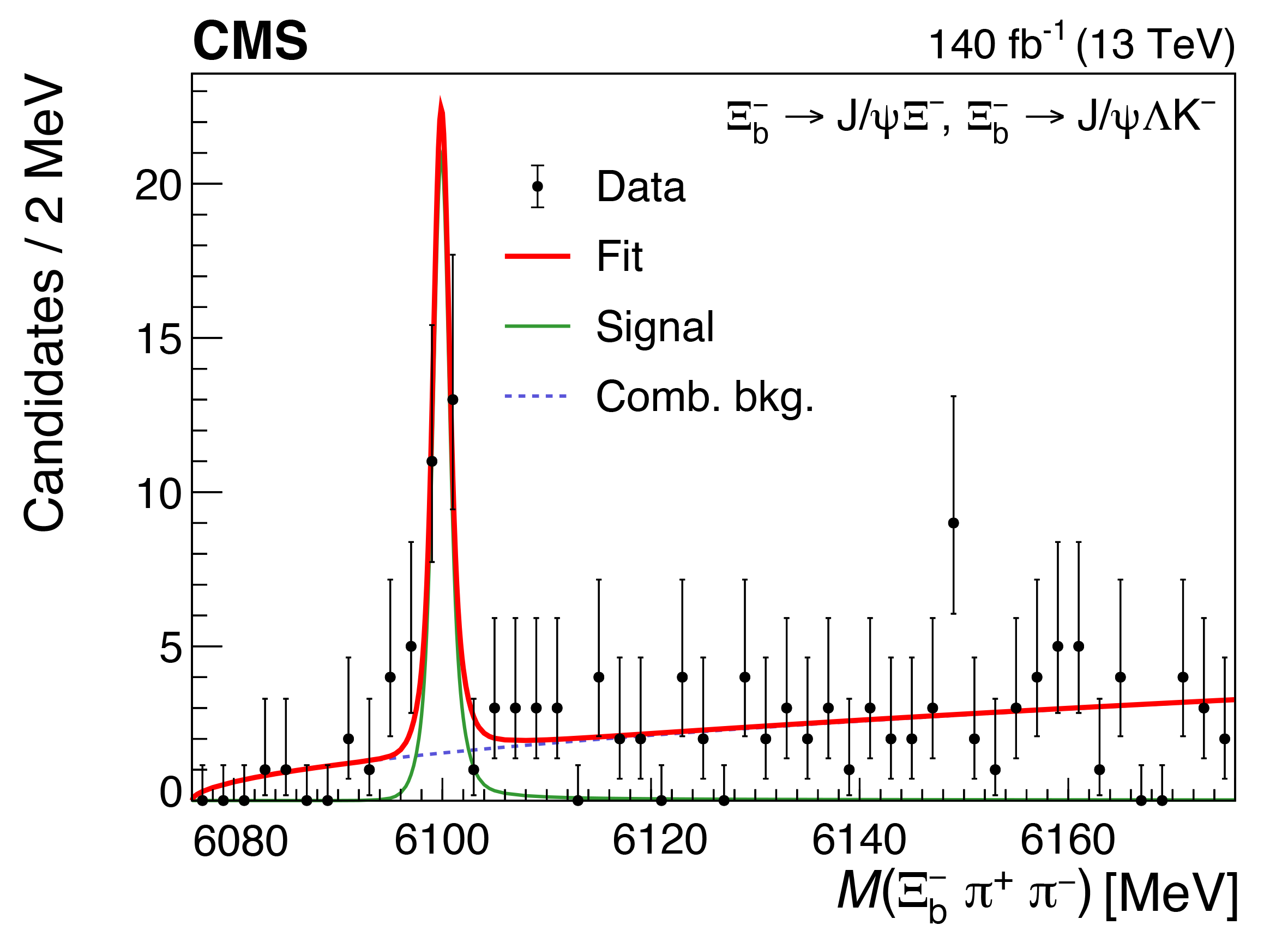The standard model describing the structure of our world at the micro level (the level of elementary particle) assumes that most particles (hadrons) consist of quarks – charged fermions, which are grouped into quark-antiquark pairs (mesons) or three quarks (baryons). A familiar example of baryons is the proton and neutron, which consist of up and down quarks. Together with the electron, they form atoms and all visible matter in the Universe.

In addition to these, the lightest baryons, there are many other states that differ in quark composition, mass, lifetime, and other characteristics. The Ξb- baryons (“xy be minus baryon”) are also such a family, consisting of the upper or lower, as well as the strange and beauty quarks. These particles live a short time and are not present in the stable matter surrounding us, but can be obtained in high-energy physics experiments at the Large Hadron Collider.
Within baryons, quarks are bound together by a fundamental strong interaction. Depending on the specific configuration of quarks within a baryon, particles with the same quark composition may have different masses and quantum numbers due to spin, radial or orbital excitation energy. Such particles are called resonances. One such resonance was first detected in the current study in the decay to a “simple” Ξb baryon and two pions.
In the CMS Collaboration, MIPT is represented by the Laboratory of High Energy Physics, which is headed by Tagir Aushev, corresponding member of the Russian Academy of Sciences. The work of the laboratory is closely connected with the educational program “Fundamental Interactions and Elementary Particle Physics” of the Landau School of Physics and Research at MIPT. Landau MIPT under the long-standing leadership of RAS Academician Mikhail Danilov. The integration of science and education at the Phystech School creates favorable conditions for students to get involved in serious science as early as their 4th or 5th year. One of the main authors of the discovery, Kirill Ivanov of the Laboratory of High Energy Physics and Master of Education program, commented on the results of the article as follows: “The strong interaction is responsible for the bonding of quarks within hadrons and helps predict exactly how particles can form. Our discovery of a new charm-strange baryon makes an important contribution to our understanding of the strong interaction, and will help various theoretical models to better calculate the properties of hadrons, to build a more accurate spectroscopy of their energy levels.
“It took us almost two years to come to this result, and at first it was not obvious that we could effectively recover and see the signal from the new baryon on the available statistics. Our scientific group did a lot of work to maximize the experimental sensitivity. And as a result, the new particle was detected with great statistical significance. I very much hope that we have many new studies ahead of us in the CMS experiment,” explains Ruslan Chistov, research supervisor, senior researcher at the Laboratory of High Energy Physics and associate professor at MIPT.
You can read more details about the discovery in the official press release published by the CMS Collaboration on the CERN website.
The Landau School of Physics and Research at MIPT is an active member of the CMS Collaboration. Landau MIPT is an active participant in experiments at the Large Hadron Collider. In addition to CMS, MIPT has recently officially joined the ALICE collaboration. In addition, many of Phystech’s core organizations are also members of all four major LHC collaborations (ATLAS, CMS, ALICE, and LHCb), providing MIPT students and staff with many opportunities to explore modern elementary particle physics at the cutting edge of science.





